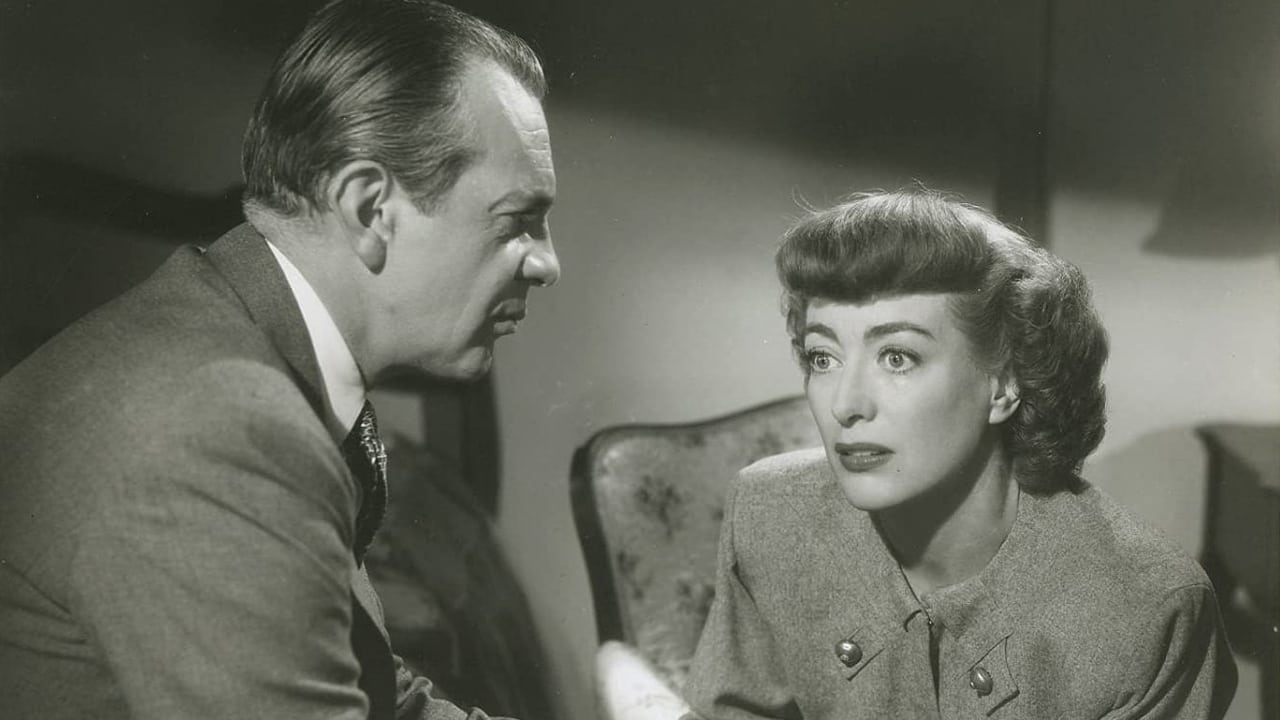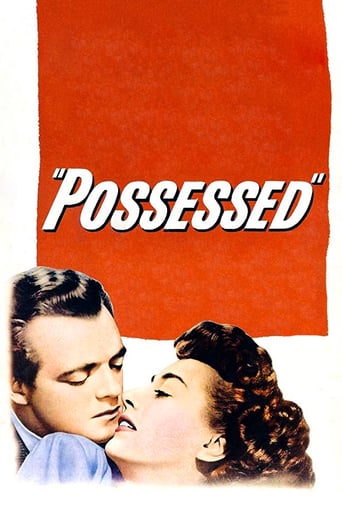

I'm impressed with Joans' performance in this movie as she comes across as a very convincing troubled woman... over a man. The sad thing for the character she plays is she is never in control of her emotions when she's around the man that she is possessed about. When he's not there you'd never know that she has a problem. Did you ever love someone or have them believe that they were in love with you but it wasn't reciprocated? Wouldn't you avoid them as much as possible? Joan was 40 in this and I have to say she looked good, mind you I'm older than that now so... I felt for her, she tried to force something that wasn't there. Her psychosis, whether initialised from birth or created through her reasoning at the time, made it impossible for her to understand and accept to be true.
... View More..sang Cypress Hill in the 1990s. That song is clearly the inspiration for this 1947 film starring Joan Crawford (Louise) as a lunatic. She is obsessed with Van Heflin (David) and this obsession transfers itself into the 'possessed' referred to in the film's title. She seems fine. She's not. At first, you may think she's just exhibiting typical woman jealousy, etc. Nope. She goes a step further. Heflin doesn't want to know about her and that is his BIG mistake.The dialogue is realistic, confrontational and amusing and the cast are all good in this film that is, unfortunately, very slow to start. Keep with it and it develops through flashback segments as Crawford lies in a hospital bed. At one point, the film veers into the spooky horror genre and I yelled out at one point when an intercom kept buzzing. There are some clever techniques used and the story does have a few twists in the way it is recounted. I enjoyed it. Schizophrenia is depicted in a much cleverer and clearer manner in this film when compared to Humphrey Bogart having a stab at it in "The Two Mrs Carrolls" from the same year. Crawford is more adept than Bogey.The other Joan Crawford films worth checking out from the 1940s are "Strange Cargo" (1940), "A Woman's Face" (1941) and "Mildred Pierce" (1945).
... View MorePossessed (1947) *** (out of 4)Joan Crawford's incredible performance is the highlight of this thriller. In the film she plays Louise Howell, a woman who begins to suffer a mental breakdown after the man (Van Heflin) she loves walks away from her. Even though she marries another man (Raymond Massey) the stress of the other one leaving her just causes her mind to collapse. It's very important to point out the fact that this film was released thirteen years before Alfred Hitchcock's PSYCHO and I say that because of how much credit that film gets when it comes to looking at mental illness. Viewing POSSESSED today it's easy to see where the film is going as it is quite predictable and there's no question that some of the mental illness terms are out of date. With that said, for the most part this is a fairly good thriller that manages to keep your attention thanks in large part to the terrific cast. I'm not sure what else can be said about Crawford but there's no question that she was on quite a row at Warner. First with MILDRED PIERCE then HUMORESQUE and finally POSSESSED, the actress was really pushing herself and it made for three incredible performances. What's so amazing about her performance here is how many different personalities she manages to play. This character goes through all sorts of mental "issues" and I really loved the various ways Crawford brought them to the screen. It could be as simple as someone turning their back on her or someone telling her that they're not in love. There are several scenes where she's imagining things happening to her and Crawford is just flawless. It certainly doesn't help that Heflin is perfect as the snake and Massey is also extremely good as the supporting husband. Geraldine Brooks also deserves a lot of credit for her wonderful supporting performance as the step-daughter. Director Curtis Bernhardt brings a lot of style and atmosphere to the film and there's also some wonderful cinematography that helps. Again, the film is quite predictable but this doesn't take away the fun or the brilliant work by Crawford.
... View MoreBrorrowing from the docufilm; The Celluloid Closet (1995) permits the viewer to focus on Possessed (1947) from a perspective which is the main point of the film. To explain further, The Celluloid Closet (1995) points out that the Hays Code (1930 - 1968) endeavoured to regulate morality. As such the Hays Code's purpose as a guide, leads the viewer's interpretation of the film. This has culminated in a narrow, one dimensional way of looking at film as in the case of Possessed.Accordingly, this has culminated in many consumers of this film to focus on the chief character Louise Howell (Joan Crawford). This has distracted the viewer from the bigger picture which is that of the ignorance pertaining to mental illness at that time. The ignorance is apparent when Howell's husband Dean Graham (Raymond Massey), ex-lover David Sutton (Van Heflin) and step daughter, Carol Graham (Gereldine Brooks) are oblivious to Cowell's breakdown which is in fact symptomatic of schizophrenia.Pointedly, when making his diagnoses Cowell's physician's approach to the condition is indirect. It is by skirting around the subject, Howell's physician deviates from having to use the word 'schizophrenia'. This prompts a reaction by Howell and as such she doesn't suffer fools by telling the doctor that she knows that he is diagnosing schizophrenia. She then went on to describe herself as 'crazy'. This negative stereotype of mental illnesses such as schizophrenia is not only a cause of ignorance, but moreover fuel's ignorance.Indeed the film's subtext is to convey a message to the Hay's Code and how it's prohibition on certain subject matters fuels ignorance. Such ignorance climax is tragedy as Possessed shows.An excellent marketing commodity, Crawford's VIP celebrity status permits a focus on her calibre as a star and actor. By focusing on Crawford too much the viewer overlooks the bigger picture of Possessed. Moreover the film becomes more of a tool to buttress Crawford's acting status which, as has been well documented, was vital to her vocation just prior to her Oscar win for Mildred Pierce (1945) when apparently her career as an Hollywood actor at MGM was on the slide.Warner Brothers who produced Mildred Pirce and Possessed utilised the Crawford MGM had forged, (for example see her in MGM's Grand Hotel 1932) which was the archetypal film star and turned her into a bona fide credible actor , which were acknowledged by her Oscar win and subsequent nomination for each film respectively. From here on in Crawford's film career took on a new direction.While the supporting cast in Possessed is credible their acting did not convey the depth of ignorance to mental illness as convincing as could have been. As to Crawford's acting she being a histrionic actor placed this film's genre as a hybrid of soapy nior. An example can be viewed in one scene when Howell pushes (albeit accidentally) step daughter Carol Graham down the stairs which turns out to be a hallucination, which is a prominent symptom of schizophrenia. Where the cast lack in their endeavours to highlight the ignorance pertaining to mental illness the director Curis Burnhadt makes up for this by utilising audio affects. This method serves as a tool to maximise and covey Howell's hallucinatory state. In sum this film is a recommended portrayal of the ignorance pertaining to mental illness. This is conveyed as a message to the Hay's Code enforcers that they were responsible for fuelling such ignorance. For that endeavour Kudos goes to director Curtis Burnhartd.
... View More